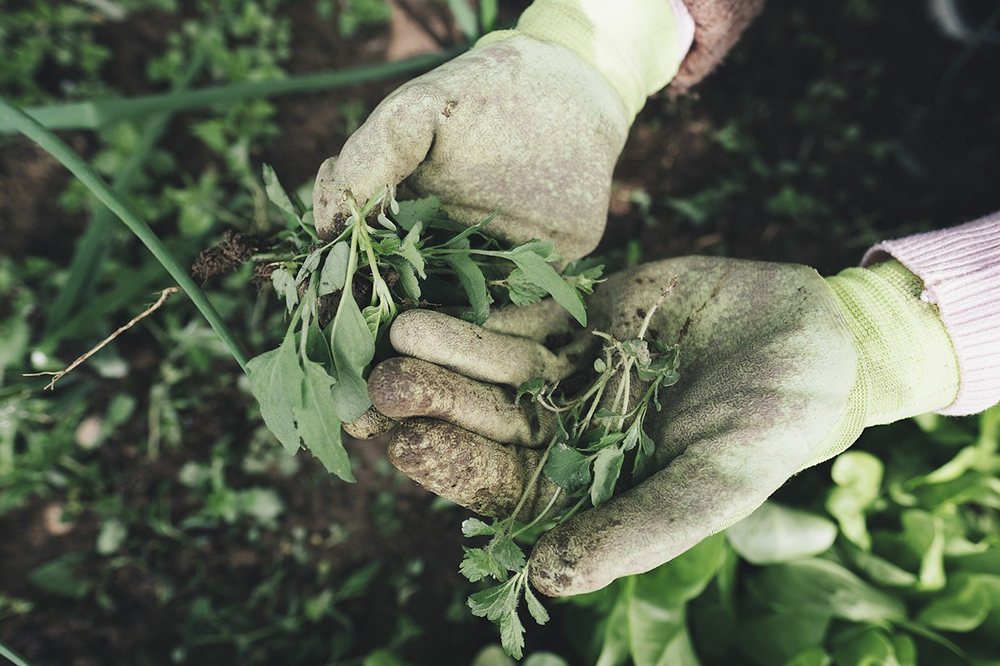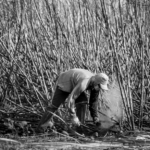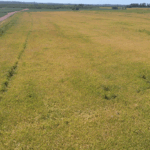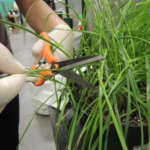Maria Luiza De Grandi, journalist at Ciência Rural, Santa Maria RS, Brazil.
Mayra Luiza Schelter, PhD at Graduate Program in Plant Production of Universidade do Estado de Santa Catarina (UDESC), Brazil.
The use of herbicides is common within the agricultural production routine to control pests, however, some species of weedy grass are increasingly resistant. The resistance of barnyard grass (Echinochloa crus-galli) to cyhalofop-p-butyl has already been confirmed in rice production areas in Santa Catarina, however it is not known whether this resistance compromises other inhibitors.
Researchers from the State University of Santa Catarina (UDESC) in partnership with the Federal University of Santa Catarina (UFSC) evaluated the occurrence of cross-resistance in barnyard grass biotypes from the main rice-growing regions of the State of Santa Catarina to ACCase inhibitors. The results were gathered in the article Resistance of barnyardgrass biotypes (Echinochloa crus-galli) to ACCase inhibitor herbicides in the main rice growing regions of the State of Santa Catarina, published in the journal Ciência Rural (vol. 54, n.º 2).
The research was carried out in a greenhouse, using three ACCase inhibitor herbicides (cyhalofop-p-butyl; quizalofop-p-ethyl and profoxydim) belonging to two chemical groups (aryloxyphenoxypropionates and cyclohexanediones). Eight doses of herbicides were administered and, subsequently, four biotypes were evaluated. These biotypes were selected based on the results of a preliminary trial with 21 populations. The results demonstrated that only one biotype of Tubarão-SC met all statistical and agronomic criteria and had cross-resistance to ACCase inhibitors confirmed.
Eberhardt et al. (2016) detected a biotype of Echinochloa crus-galli with multiple resistance to the herbicides quinclorac (cellulose biosynthesis inhibitor), penoxsulam (ALS inhibitor) and cyhalofop-butyl (ACCase inhibitor). One of the methods normally used to understand the dynamics between weedy grasses and the herbicides used to control them is the dose-response curve, using this method it is possible to determine the susceptibility or resistance of a given biotype.
According to Vargas and Roman (2006), after resistance is detected, the scientific community, companies, technicians and farmers must be informed and management measures for the resistant population must be widely disseminated. Monitoring and evaluating the efficiency of the measures adopted to combat resistance are essential to guarantee the success of the practice. Weedy grass resistant to ACCase inhibitor herbicides play an important role due to the limited number of herbicides with alternative sites of action for their management, and because these herbicides are the main option for the management of glyphosate-resistant grasses.
According to researcher Mayra Luiza Schelter, the results may enable the control of even resistant barnyard grass biotypes with herbicides with different mechanisms of action for already resistant biotypes. The research shows how to carry out dose response work with resistant biotypes and what this entails in control problems. “Furthermore, the results indicate a case of resistance to ACCase-inhibiting herbicides and the location in which this biotype is found. This way, the dispersion of this biotype and the worsening of cases of barnyardgrass resistance to ACCase-inhibiting herbicides can be avoided. ACCase”, adds the researcher.
References
EBERHARDT, D.S., et al. Barnyardgrass with multiple resistance to synthetic auxin, ALS and ACCase inhibitors. Planta Daninha [online]. 2016, vol. 34, no. 4, pp. 823-832 [viewed 12 August 2024]. https://doi.org/10.1590/S0100-83582016340400023. Available from: https://www.scielo.br/j/pd/a/QCHXcmRvQfrLHzS54qBzCZb/
MEROTTO, A.J., et al. Cross-resistance to herbicides of five ALS-inhibiting groups and sequencing of the ALS gene in Cyperus difformis L. Agricultural and Food Chemistry [online]. 2009, vol. 57, no. 4, pp. 1389-1398 [viewed 12 August 2024]. https://doi.org/10.1021/jf802758c. Available from: https://pubmed.ncbi.nlm.nih.gov/19191488/
VARGAS, L. and ROMAN, E.S. Identificação e manejo de plantas daninhas resistentes a herbicidas. Passo Fundo: Embrapa Trigo, 2006.
LÓPEZ-OVEJERO, R.F., et al. Resistência de plantas daninhas aos herbicidas inibidores da ACCase (Grupo A). In: CHRISTOFFOLETI, P.J. and NICOLAI, M. (ed.). Aspectos de resistência de plantas daninhas a herbicidas. HRAC-BR, 2016, p. 77-98.
To read the article, access
SCHELTER, M.L., et al. Resistance of barnyardgrass biotypes (Echinochloa crus-galli) to ACCase-inhibiting herbicides in the main rice-growing regions of the state of Santa Catarina, Brazil. Cienc Rural [online]. 2024, vol. 54, no. 2, e20220384 [viewed 12 August 2024]. https://doi.org/10.1590/0103-8478cr20220384. Available from: https://www.scielo.br/j/cr/a/srvY8Yw5sqGF3mBY9mzwpmn/
External links
Ciência Rural – CR: https://www.scielo.br/cr/
Ciência Rural – Site: http://coral.ufsm.br/ccr/cienciarural/
Ciência Rural – Social Media: Twitter | Facebook | Instagram
Como citar este post [ISO 690/2010]:




















Recent Comments